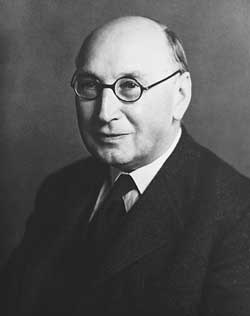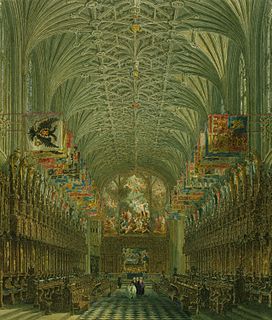Related Research Articles

Sir Walter Parratt was an English organist and composer.

Sir William Henry Harris KCVO was an English organist, choral trainer and composer, affectionately nicknamed "Doc H" by his choristers.

James Nares was an English composer of mostly sacred vocal works, though he also composed for the harpsichord and organ.
Edmund Horace Fellowes, was a Church of England clergyman and musical scholar who became well known for his work in promoting the revival of sixteenth and seventeenth century English music.

William Child was an English composer and organist.

Windsor Castle is a royal residence at Windsor in the English county of Berkshire. It is notable for its long association with the English and later British royal family and for its architecture.

The Choir of St George's Chapel at Windsor Castle exists to sing services in St George's Chapel at Windsor Castle.
Timothy Byram-Wigfield is an English organist and conductor.
Ralph Brideoake (1612/13–1678) was an English clergyman, who became Bishop of Chichester.
Christopher John Robinson is a British conductor and organist.

Charles Hylton Stewart was an English cathedral organist, who served in Rochester Cathedral and St. George's Chapel, Windsor Castle. He also produced several compositions for organ, and a few for choir.

St. George's Chapel at Windsor Castle in England is a chapel built in high-medieval Gothic style. It is both a Royal Peculiar, a church under the direct jurisdiction of the monarch, and the Chapel of the Order of the Garter. It is located in the Lower Ward of the castle. St. George's castle chapel was originally founded in the 14th century by King Edward III and extensively enlarged in the late 15th century. It has been the scene of many royal services, weddings and burials. Windsor, England's premier castle, is the principal residence of the monarch.
Jonathan Rees-Williams is a British cathedral organist, who served in Lichfield Cathedral and St. George's Chapel, Windsor Castle.

The historical monographs relating to St George's Chapel, Windsor Castle are a series of scholarly publications supported by the Dean and Canons of Windsor. Much of the scholarship is based on the material held in the archives at St. George’s Chapel, Windsor Castle.

Sir Jeffry Wyatville was an English architect and garden designer. Born Jeffry Wyatt into an established dynasty of architects, in 1824 he was allowed by King George IV to change his surname to Wyatville. He is mainly remembered for making alterations and extensions to Chatsworth House and Windsor Castle.
Gregory Hascard DD was a Canon of Windsor from 1671 to 1684 and then Dean of Windsor from 1684 until 1708, but he was also a noted pluralist. He wrote three books on religious subjects.
Richard Sleech D.D. was a Canon of Windsor from 1722 to 1730.
Francis Pigott was an English Baroque composer and organist.
James William Webb-Jones (1904–1965) was a Welsh choral conductor, educator, and cricketer.
William Stanley (1820–1902) was an English-born Australian classical music composer and performer.
References
- ↑ Cathedral Organists, John E. West, London, Novello and Company, 1899.
| This article on an organist is a stub. You can help Wikipedia by expanding it. |